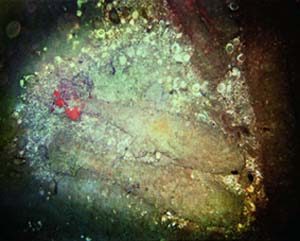Roi Kuper | Voices of Silence
Ansar, 2003, C-print
Roi Kuper’s series Ansar unfolds along the bare, rigid concrete wall. It features twelve photographs from the Ketziot Jail in the Negev, nicknamed “Ansar” after the first jail in Lebanon whose name was borrowed by the Palestinian prisoners and Israeli soldiers.
The Ketziot (Ansar) jail was first opened in 1988, after the outbreak of the first Intifada (Palestinian Uprising), and was closed during the implementation of the Oslo Accords, upon the release of the security prisoners. During that period it held thousands of Palestinian detainees in harsh conditions, becoming a notorious symbol of repression. Following the Operation Defensive Shield in 2002, the jail was renovated and reopened.
Roi Kuper depicts the jail’s inactive, deserted sections, while describing its characteristics. Desolation and neglect dominate the “landscapes” stretched toward the confined skyline. Against the backdrop of bright-clouded skies stands the incarceration “city”: barbed wire fences, guard posts and arid flora. The silent, unpopulated photographs conceal the memory and echoes of the past. They convey feelings of dryness, aridity and end, which reinforce the gloomy image of the jail and the connotations it invokes.
